A tiny bird whose rust-colored head contrasts beautifully with his daffodil yellow body streaked with rufous red.
Meet the Mangrove Warbler

Photo Courtesy of Feroze Omardeen / CC BY 2.0
The Mangrove Warbler is a sub-species of the Yellow Warbler (Setophaga petechia) a bird more commonly seen in North America. Although this warbler prefers a more tropical climate, such as Mexico or Central America, small numbers are seen in the southeastern corner of Texas where a colony as started. There is a possibility that this bird will be declared a distinct species. The male has a rust-colored head with the rest of his body decked out in yellow, which is rufous flecked on his breast and flanks. His greenish-yellow wings and tail are edged with yellow. The bill is thin and pointed.
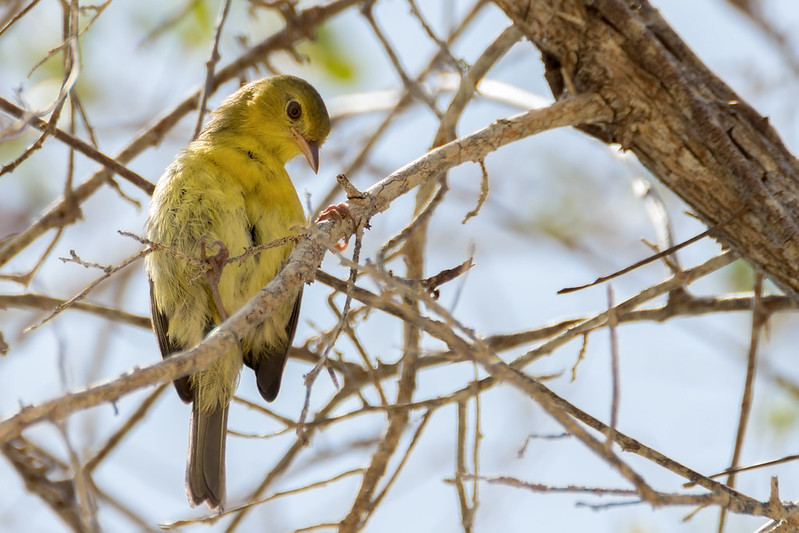
Photo Courtesy of Fernando Flores / CC BY-SA 2.0
The female of this species is similar to the northern Yellow Warbler but duller in color. Below her plumage is more yellow appearing a greenish-yellow above.
She lacks or has barely visible streaks on her breast and flanks. Like the male, she has greenish-yellow wings and a tail with yellow edges.
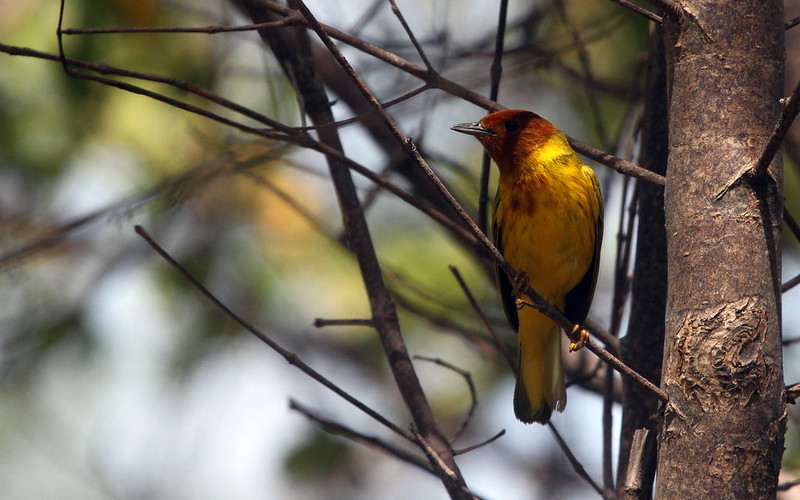
Photo Courtesy of Greg Schechter / CC BY 2.0
As its names suggest, this bird inhabits the coastal mangroves of northern South America and Central America.
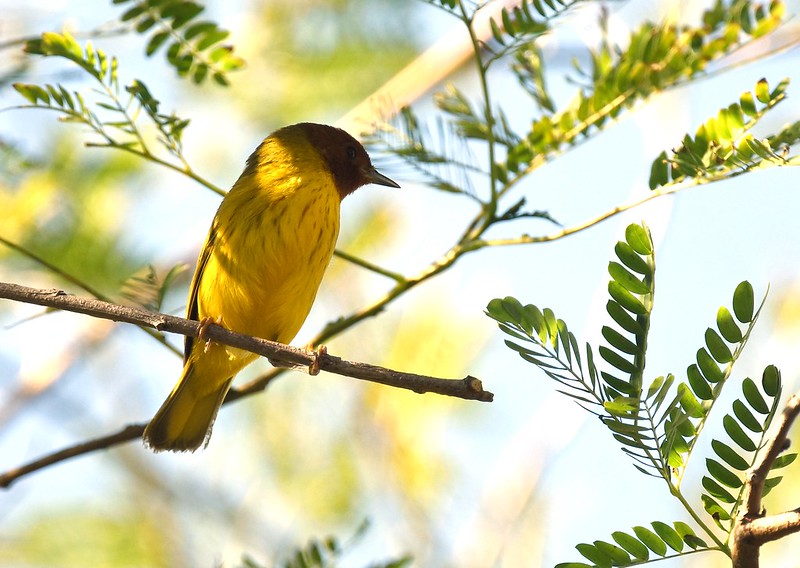
Photo Courtesy of Andy Reago & Chrissy McClarren / CC BY 2.0
In 2003 and 2004 a small population of these birds was found in mangroves on the south Texas coast near Port Isabel and South Padre Island where they still occur, apparently all year long.
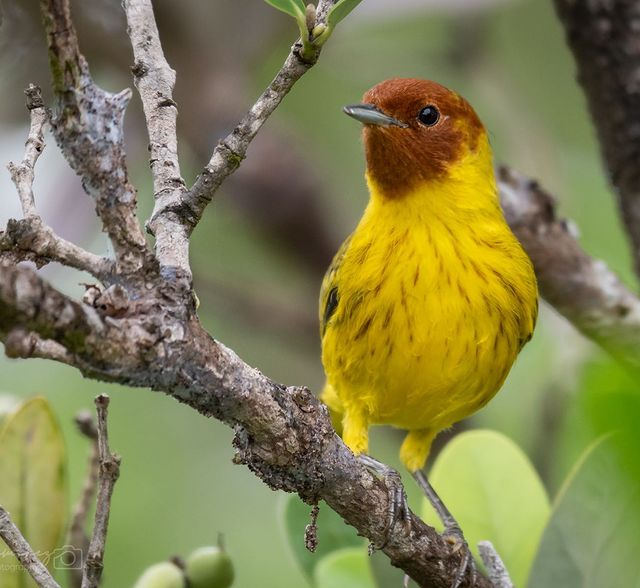
Yellow warblers are carnivores (insectivores). They feed mainly on insects and will also eat other invertebrates and sometimes take berries and similar small juicy fruits.
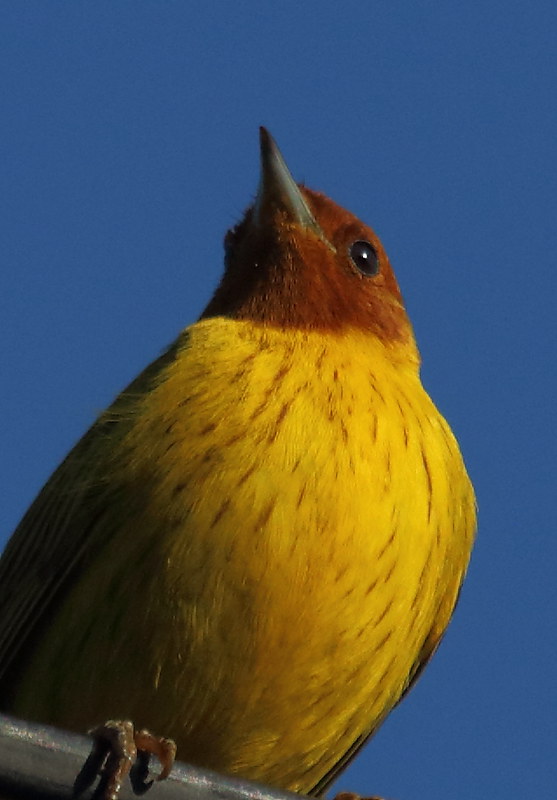
Photo Courtesy of Fernando Flores / CC BY-SA 2.0
The yellow warbler starts breeding in May/June, while the mangrove warbler breeds all year round. American yellow warblers have been known to raise a brood of young in as little as 45 days, with 75 the norm. Tropical populations, by contrast, need more than 100 days per breeding. Males court the females with songs, singing 3,200 or more per day. They are, like most songbirds, generally serially monogamous; some 10% of mangrove warblers and about half as many American yellow warbler males are bigamous. Very few if any American yellow warblers breed more than once per year, with just 5% of female mangrove warblers doing so. If a breeding attempt fails, either parent will usually try to raise a second brood.
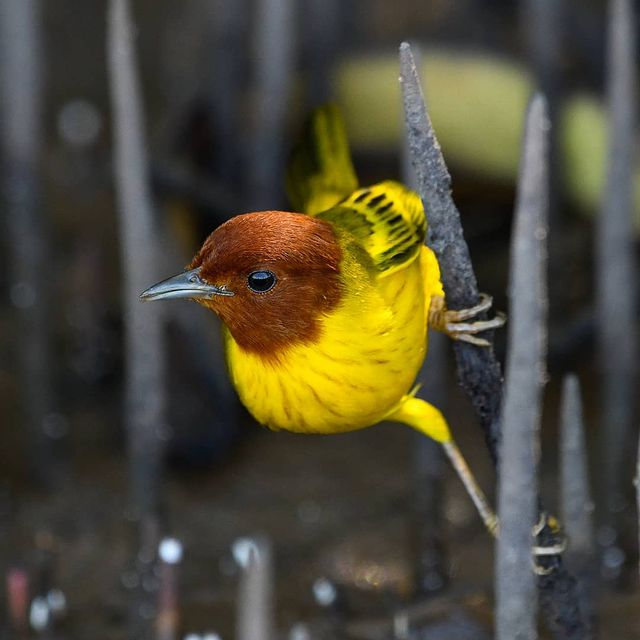
Being generally common and occurring over a wide range, as a species the yellow warbler is not considered a threatened species by the IUCN. There is a concern for the small population of Mangrove warblers in South Texas if there is another killing freeze such as the one in 1989.
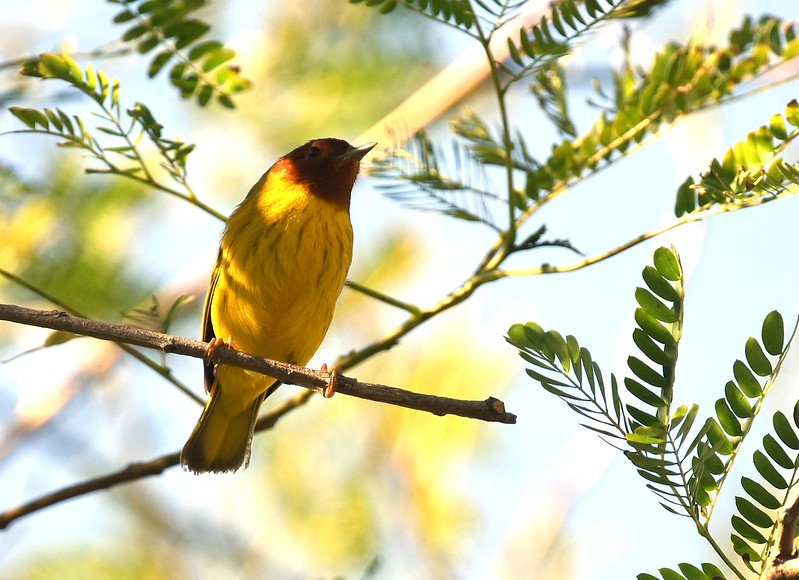
Photo Courtesy of Andy Reago & Chrissy McClarren / CC BY 2.0
You can watch this bird right here in the video below:




